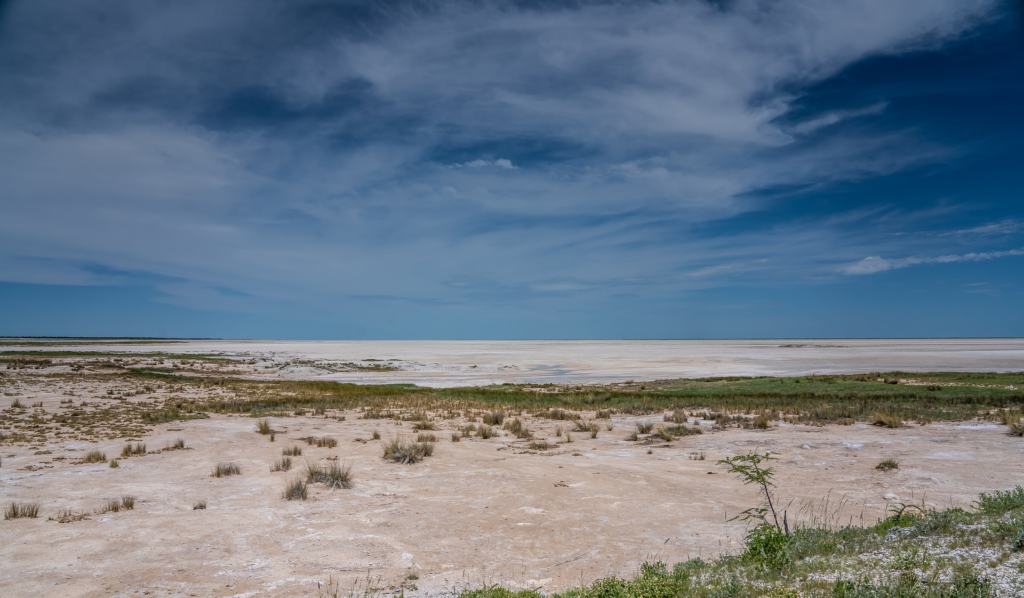http://people.oregonstate.edu/~muirp/saliniz.htm
Salinization refers to a build up of salts in soil, eventually to toxic levels for plants. (3,000 – 6,000 ppm salt results in trouble for most cultivated plants.) Salt in soils decreases the osmotic potential of the soil so that plants can’t take up water from it. When soils are salty, the soil has greater concentrations of solute than does the root, so plants can’t get water from soil. (Remember osmosis — water “tries” to accomplish dilution — it moves from areas with lower concentration of dissolved substances to areas with higher concentration?) The salts can also be directly toxic, but plant troubles usually result primarily from inability to take up water from salty soils.
Problems with salinization are most commonly associated with excessive water application, rather than with too little.
Where does the salt come from?
All irrigation water contains dissolved salts derived as it passed over and through the land, and rain water also contains some salts. These salts are generally in very low concentration in the water itself.
However, evaporation of water from the dry surface of the soil leaves the salts behind. Perhaps you have seen the whitish salt crust that can result on the surface of soils?
Salinization is especially likely to become a problem on poorly drained soils when the groundwater is within 3 m or less of the surface (depending on the soil type). In such cases, water rises to the surface by capillary action, rather than percolating down through the entire soil profile, and then evaporates from the soil surface.
While farmers irrigate extensively here in western Oregon, salinization isn’t really a problem here, as, during winter, we get enough water to flush the salts that were deposited during the summer irrigation.
Salinization is a worldwide problem, particularly acute in semi-arid areas which use lots of irrigation water, are poorly drained, and never get well flushed. These conditions are found in parts of the Mideast, in China’s North Plain, in Soviet Central Asia, in the San Joaquin Valley of CA, and in the Colorado River Basin; all areas where the soil profile never (or rarely) gets well flushed.
It is hard to find consistent estimates of how much of the world’s irrigated acreage is affected by salinization — you can find credible sources claiming anywhere between 8 and 32%. Ten to 20% seems to be mid-line for the estimates, globally. Salt concentrations are high enough in much of this irrigated acreage to decrease yields significantly. In extreme cases, land is abandoned because it is too salty to farm profitably.
The “treatment” for salinization is to flush the soil with lots of water. However, this results in salinization of the river and groundwater where the flush water goes. For example, the Colorado River was too salty for the Mexican farmers to use for irrigation, so the Mexican government forced the US to construct a desalinization plant near the Mexican border so the water would be useable. At times in summer, the Red River in TX and OK is saltier than seawater from its load of leached salts. In addition, the flushing is very hard on the soil structure.
In extreme cases, when the salt crust is too thick, it can’t be flushed, as water just runs off the salty surface.




